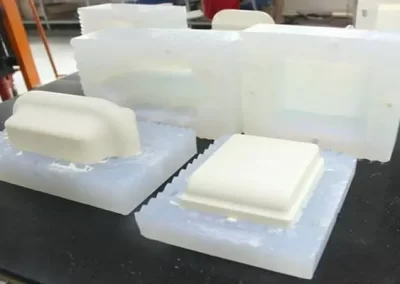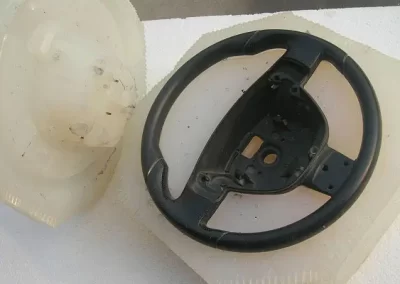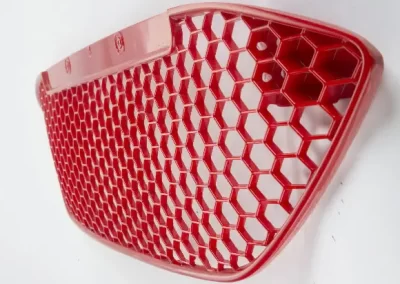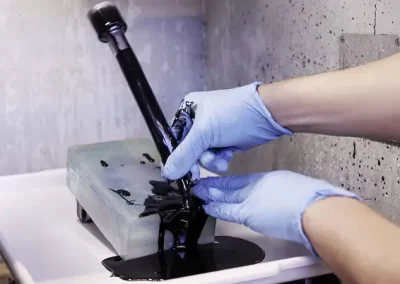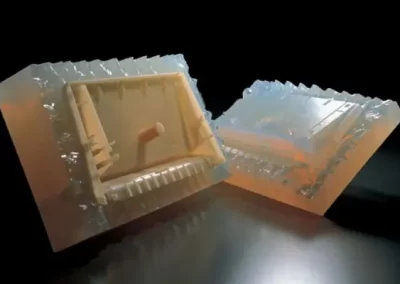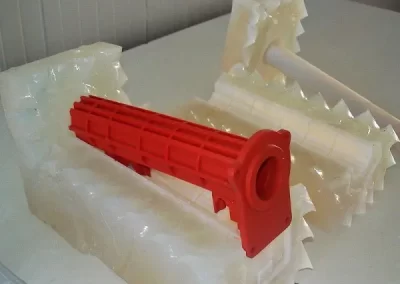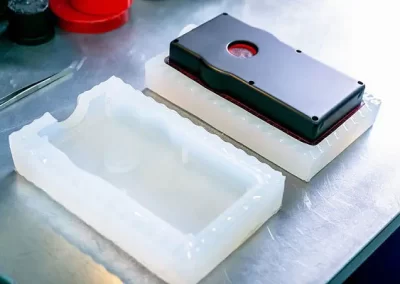Vacuum Casting
Better Vacuum Casting by M2 Prototype
Vacuum casting, also known as Polyurethane casting or Urethane casting, is a rapid manufacturing technique used to produce small quantities of new products for testing within a specific range of customers. This allows for further verification of whether the products will fit the market before mass production. It is a very necessary processing stage before mold tooling and injection molding.
At M2 Prototype, our engineers noramlly use two-component polyurethanes resins of silicon molds to produce qualified prototypes of plastic and rubber parts in small batch. We provide one-stop custom manufacturing services through mast pattern making (usually by 3d printing and cnc machining) to vacuum casting and surface finishing.
Below are some key technical specs of the vacuum casting service by M2 Prototype.
- Accuracy: +/- 0.20 mm per 100 mm.
- Min wall thickness: 1.5 ~ 2.5 mm to get the best performance.
- Min. width amd height for logos or letters: witdh = 2x height.
- Min. gap between recessed letters and raised: 1.27 mm.
- Silicon mold life circle: 20-30 times.
- Surface structure: from gloss to matt, and more customized surface finishing treatments achieveable.
In Need of Small Batch Production?
How M2 Processes Vacuum Casting for Your Low Volum Manufacturing Needs?
Step 1
Our experienced engineer team will study the 3d designs and 2d drawings provided by the client. After mutual adequate discussion, we may offer some pertinent advices from the perspective of actual production experiences for our client to optimize the design files.
Step 2
A master pattern mold will be produced through 3d pringing and cnc machining. This master pattern will be used as primiary mold to creat silicone molds for small batch production in later phases. Master pattern mold making is a significant step that require high precision.
Step 3
The master pattern together with a casting box will be set to create silicone molds. After fixing the master pattern and casting box, hot molten silicone will be poured into the box, where it flows insde master pattern and fill all the prototype mold in around 8-16 hours.
Step 4
Relevant polyurethanes will be completely mixed with color pigments and other agents under around 40°C into a homogeneous solution, then the mixture resin will be poured into the molds using a funnel to ensure uniform distribution and to prevent air bubbles from forming.
Step 5
After completely set and properly seale the mold, we will place the mold into a vacuum casting chamber for curing procedures at around 70°C. Done curing, we will remove the mold from champer and separate the two halves of the mold properly remove the cast.
What Materials M2 Uses for Vcauum Casting?
ABS-Like
Similar to ABS thermo plastic, versatile polyurethane plastyic resin is a idea material for a wide rang of products due to its hard, rigid and impact resistant features.
Hardness: Shore D 78-82.
Colors: RAL or Pantone color matchable and customized color available.
Applications: General purpose items, enclosures.
Polycarbonate-Like
It is a clear simulating polycarbonate with rigid, high impact features, easy to machine and finish, fitting avarious end usages.
Hardness: Shore D 82-86.
Colors: Clear, RAL or Pantone color matching.
Applications: Skylights,sign boards, light diffusers, visors etc.
PMMA
PMMA is a high quality uv stable urethane resin which enjoys good clarity. It is a ideal material for glossy glossy, clear parts as a classic substitute for acrylic-like.
Hardness: Shore D 90-99.
Colors: RAL color or Pantone colors matching.
Applications: Signal display parts, lighting components.
Polypropylene-Like
Known as PP-Like urethane, it is a blend of different polypropylene monomers, though, flexible, and resistant to many external factors.
Hardness: Shore D 65-75.
Colors: Black or natural only.
Applications: Medical parts, food containers, toys, Enclosures.
Acrylic-Like
The most important feature of acrylic- like material is its transparence, also it is a stiff urethane resin simulating acrylic with mdeium to high strength.
Hardness: Shore D 87.
Colors: Clear.
Applications: Transparent components, lighting pipes, clear artwork parts.
Elastomer
It is similar to TPU, TPE and silicone rubber. Elastomer material refers to polyurethane plastic resin, simulating rubber-like materials.
Hardness: Shore A 20 to 90.
Colors: All colors and precise Pantone color matchings.
Applications: Various wearable products.

